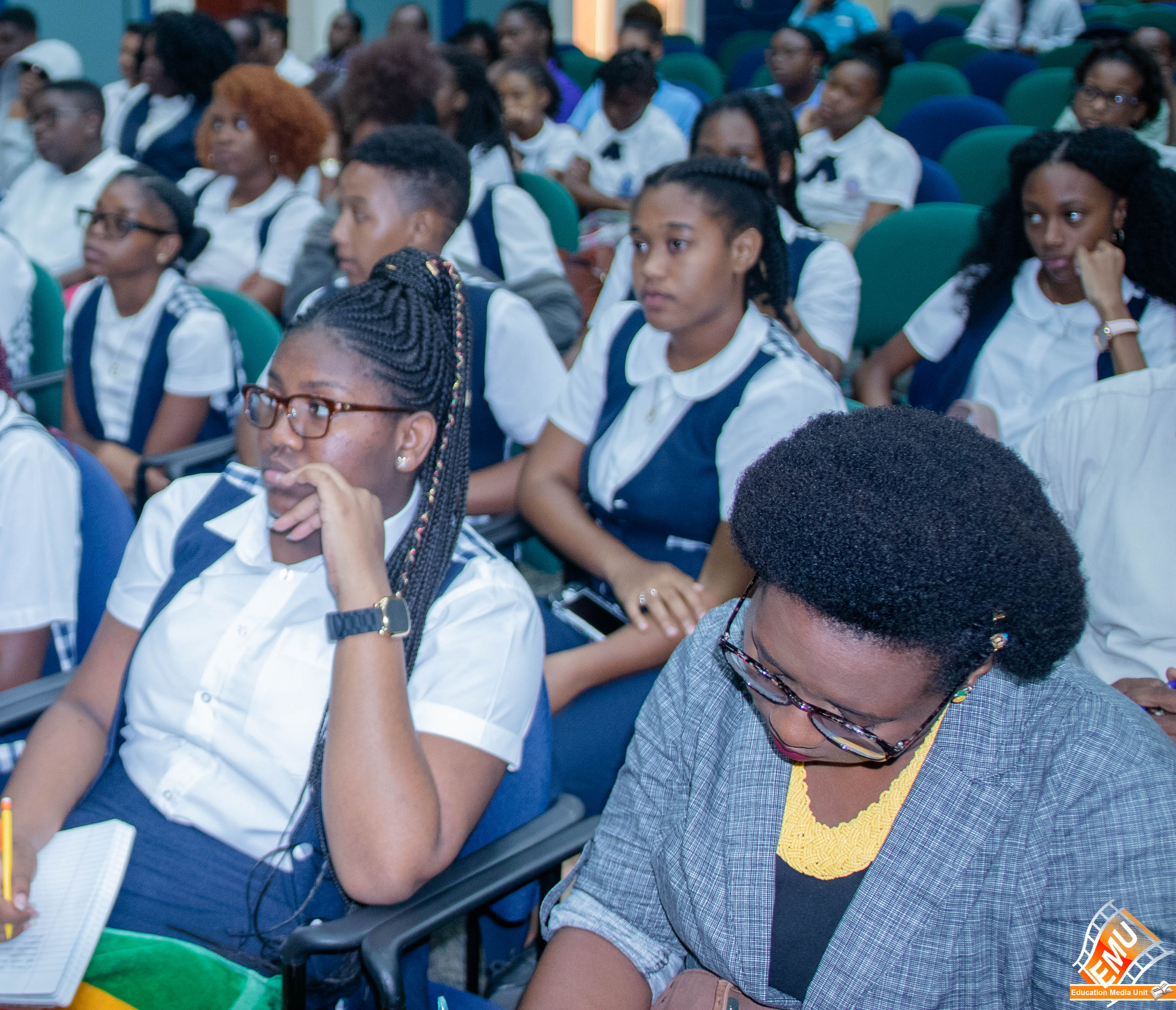
(EMU) – St. Kitts, October 5, 2018: Aimed at strengthening national capacity and educating citizens, an informational session for the Development of the Minamata Initial Assessment (MIA) for the Caribbean was hosted on Wednesday 3rd October at the Sir Cecil Jacobs Auditorium.
Executing agencies, The Saint Kitts and Nevis Bureau of Standards (SKNBS), in collaboration with the Basel Convention Regional Centre for Training and Technology Transfer for the Caribbean (BCRC-Caribbean), extended the invitation for the Informational Session to over 100 students and teachers from all the high schools, C.F.B. College and Nevis Sixth Form College in the Federation.
The informational session introduced the audience to mercury, the Minamata Convention and the MIA Project, through engaging presentations and a viewing of awareness-raising live-action videos and as well as infographic materials.
It was revealed that, Mercury which is a natural element is found in the Earth’s crust and exists in various forms, each with a varying degree of toxicity but all equally harmful, affecting the nervous system, the brain, heart, kidneys, lungs and the immune system of all living beings.

The Minamata Convention on Mercury of which Saint Kitts and Nevis is Party, is a global treaty enforced on 16 August 2017. The MIA Project aims to facilitate the ratification and early implementation of the Minamata Convention on Mercury to contribute to the protection of human health and the environment from the risks posed by unintentional and intentional emissions of the toxic chemical as well as unsound use and management of mercury.
According to Dr. Marcus Natta, Science and Research Manager at the SKNBS, the Bureau intends to ensure that the Federation not only meets all obligations of the Treaty but also assists the region with the development of a project. Other countries listed as parties to the MIA include Jamaica, St. Lucia and Trinidad and Tobago.

Project Execution Officer, Tahliah Ali Shah, urged students to pay keen attention to foods they consume and everyday products they may come into contact with for mercury. “Push for the use of mercury free alternatives, instead of CFL bulbs use LED bulbs. Check the labels of all cosmetics that you use, most time mercury isn’t listed on the label under its name, so you should be aware that many of these products are mislabelled.” She explained, while referencing the presence of mercury in skin lightening creams, which was met with much interest by the students.
St. Kitts and Nevis started the eradication of light bulbs that contained mercury in 2014 which have now been replaced by LEDs. Thermometers and blood pressure meters have also been changed to electronic ones, and all dental amalgam has also been changed to exclude mercury. Future plans for the complete end of mercury importation by 2020 are being developed in all of the countries party to the convention.
-30-









